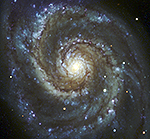
Montage Montage is an astronomical image toolkit with components for reprojection, background matching, coaddition and visualization of FITS files. It can be used as a set of command-line tools (Linux, OS X and Windows), C library calls (Linux and OS X) and as Python binary extension modules.
The Montage source is written in ANSI-C and code can be downloaded from GitHub ( https://github.com/Caltech-IPAC/Montage ). The Python package can be installed from PyPI ("</i>pip install MontagePy"). The package has no external dependencies. See http://montage.ipac.caltech.edu/ for details on the design and applications of Montage.
MontagePy.main modules: mOverlaps¶
The Montage modules are generally used as steps in a workflow to create a mosaic of a set of input images. These steps are: determine the geometry of the mosaic on the sky, reproject the images to a common frame and spatial sampling; rectify the backgrounds to a common level, and coadd the images into a mosaic. This page illustrates the use of one Montage module, mOverlaps, which is used to determine the set of overlap areas for a collection of images.
Visit Building a Mosaic with Montage to see how mOverlaps is used as part of a workflow to creage a mosaic (or the one shot version if you just want to see the commands). See the complete list of Montage Notebooks here.
from MontagePy.main import mOverlaps, mViewer
help(mOverlaps)
mOverlaps Example¶
In a test region near M17 we have 48 J-band images. Here we use mOverlaps to determine which of these overlap and by how much.
rtn = mOverlaps("M17/pimages.tbl", "work/M17/diffs.tbl")
print(rtn)
Here is the output
import os
import numpy as np
import pandas as pd
from astropy.io import ascii
ipactable = ascii.read('work/M17/diffs.tbl').to_pandas()
ipactable
and here is a coverage map illustrating the overlaps:
from IPython.display import Image
rtn = mViewer("-color black -imginfo M17/pimages.tbl \
-ct 1 -gray M17/mosaic.fits -2s max gaussian-log \
-out work/M17/mosaic.png",
"", mode=2)
Image(filename='work/M17/mosaic.png')
Error Handling¶
If mDiff encounters an error, the return structure will just have two elements: a status of 1 ("error") and a message string that tries to diagnose the reason for the error.
For instance, if the user specifies a table that doesn't exist:
rtn = mOverlaps("M17/unknown.tbl", "work/M17/diffs.tbl")
print(rtn)
Classic Montage: mOverlaps as a Stand-Alone Program¶
mOverlaps Unix/Windows Command-line Arguments¶
mOverlaps can also be run as a command-line tool in Linux, OS X, and Windows:
Usage: mOverlaps [-e] [-d level] [-s statusfile] images.tbl diffs.tbl
If you are writing in C/C++, mOverlaps can be accessed as a library function:
/*-***********************************************************************/ /* */ /* mOverlaps */ /* */ /* Given a list of images, determines which ones overlap. This program */ /* assumes that the images are relatively small (i.e. not all-sky) and */ /* determines if there is overlap by going around the outside of each */ /* to see if any of the edge pixels are inside the other. */ /* */ /* char *tblfile Image metadata file */ /* char *difftbl Output table of overlap areas */ /* */ /* int quickmode Use faster but fairly accurate overlap check */ /* rather than full geometry calculation */ /* */ /* int debug Debugging output level */ /* */ /*************************************************************************/ struct mOverlapsReturn *mOverlaps(char *tblfile, char *difftbl, int quickmode, int debug)
Return Structure
struct mOverlapsReturn
{
int status; // Return status (0: OK, 1:ERROR)
char msg [1024]; // Return message (for error return)
char json[4096]; // Return parameters as JSON string
int count; // Number of overlaps.
};